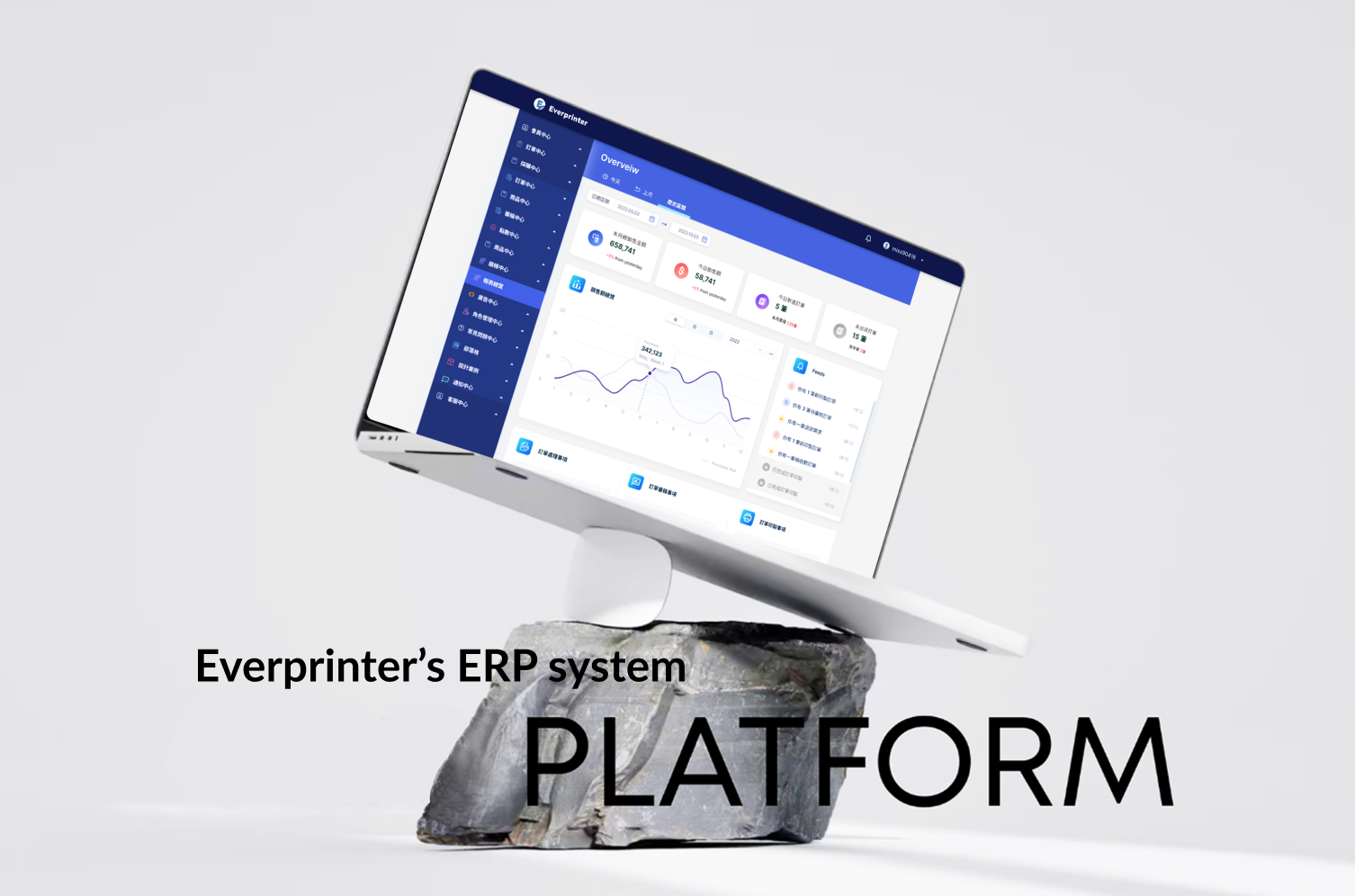

Background
About Everprinter’s ERP system
The Enterprise Resource Planning (ERP) is primarily designed for the business management system within the printing industry, serving as a unified collaboration platform for sharing information and resources in the enterprise.
Traditional management concepts still hold a significant proportion in the printing industry, leading to substantial communication costs and impacting work efficiency and accuracy due to manual and paper-based operations. Therefore, the main task of Everprinter’s ERP system is to implement digitalization and systematization of the printing process.
Main Task & Goal
Considering the diversity of vendors and the complexity of printing processes in the printing industry, the system functionalities include job management, communication and information management, and printing process tracking. This aims to implement the integration of information resources for both the front-end and back-end in e-commerce, addressing the specific challenges and needs of the printing industry.
The primary goal of this ERP system integration project is to enable real-time information updates, facilitating the smooth adoption of digital systems by the business, and achieving more efficient customer service and operational management.
Design Process
Design progress is a critical phase in any creative or development project. It involves the definition of functions and the design process.

Ideation & Planning
Defining Project Requirements for Efficient Design Development
Before starting the design, I conducted an inventory of the entire project’s requirements to facilitate subsequent research planning. I listed several topics that needed to be defined, including target users, technical support and limitations, and system objectives, and created corresponding interview scripts. This clarification phase is particularly important, as it helps ensure that all stakeholders stay focused on common goals during the design and development process.

Exploration & Expectation
Through multiple rounds of research and analysis, we established the system framework and functional concepts.
01. Survey : Desk research
I began by researching various ERP systems available in the market and evaluating their features, advantages, and disadvantages. This study provided me with a foundational understanding of these systems and allowed me to start envisioning the core components required for the system. Over time, I identified several referenceable interface features and architectures, prioritizing a design that aligns with business needs and technical requirements to ensure efficient development and scalability.

02. User behavior interview :
Next step was to collect and organize all the information that our stakeholders holded. To gain a deeper understanding of the organization's structure and operations, I conducted six in-person interviews with users to learn about their workflows. During these sessions, we discussed the essential features the system should have, including a comprehensive review of the entire operational process. This process helped simplify and consolidate the core tasks of various stakeholders, laying the groundwork for drafting the system's flow.

The iterative process of designing and refining the flow proved to be the most challenging. It required addressing numerous technical issues related to the system’s foundational architecture. The goal was to seamlessly transition the paper-based workflows into the new system while aligning as closely as possible with each stakeholder’s working habits. To tackle this, we explored multiple scenarios based on customer orders and order confirmations, envisioning how these scenarios could align with the system’s functionality. Using wireframes, we simulated the overall structure, providing a clear outline of the system’s design.

03. Customer Journey Map & Servie Blueprint
During the framework design process, we need to further check whether the system can effectively respond to a series of events in the customer shopping process. I adopted a combined approach using customer journey mapping and service blueprinting. This method encompassed user activities before, during, and after the shopping process, examining their interactions with the system at each stage. Through this analysis, we identified areas where the system needed to enhance its interactive experiences.

Key Objectives
A structure that contains information about all pages of a system
Through team discussions and iterative refinement, we converged and visualized the complete set of functionalities that the Everprinter’s ERP system should have. Additionally, I considered the feasibility and limitations of the business scope, ultimately drafting the key system roadmap.

Information Architecture
Site Map: Developed the information architecture for all functionalities, clearly defining the relationships between main pages and subpages to ensure seamless navigation and intuitive user experience.
Before producing a more precise system architecture, I conducted a card sorting to ensure that the placement of features was logical and relevant. This approach effectively reorganized the information and created a sitemap with all functions.

ERP System- flowchart
Flowchart refers to the path or sequence of steps that visually represent a process or decision-making flow, helping to clarify how actions are connected.


Research Impact
Business
Provides dashboards to consolidate and record historical sales data, offering insights into customer order trends and potential leads. This helps formulate targeted marketing strategies.
Management
• Resource Management: Optimizes resource allocation by providing visibility into inventory, personnel, and financial data.
• Automates the product manufacturing process with task assignments and transparent management. It enables quick personnel adjustments and provides contingency measures for urgent orders and management.
User
A customer service chatroom that offers a dedicated communication channel for clients, strengthening the relationship between sales teams and customers.
Design System & UI/UX Design
We have now complete our UX design start with design system, Style Guideline ends with screens for WebsiteUser flow refers to the path or sequence of steps that a user follows to accomplish a specific task






